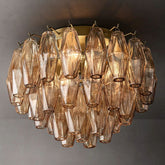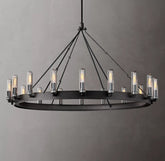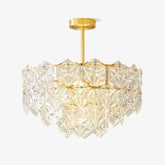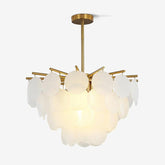Global Voltage Reference Guide
When purchasing electrical appliances or lighting fixtures for use across different countries, it's crucial to understand the voltage systems in place. This guide focuses on the voltage standards in developed Western countries such as the United States, Canada, and various nations across Europe. Knowing the voltage requirements helps ensure safety and compatibility, especially when dealing with different plugs, sockets, and power systems. In this blog, we’ll discuss the standard voltages and frequencies in major countries, with a focus on North America and Europe.
Voltage Standards: A Key Consideration for Safe Use of Electrical Devices
Electricity runs on different voltage systems depending on the country, and using appliances or lighting fixtures in regions with incompatible voltages can damage the devices or even pose safety risks. Developed countries generally adhere to two main standards: 110-120V and 220-240V, which are the ranges used to power most household appliances, electronics, and lighting.
1. North America: United States and Canada
- Voltage: 120V
- Frequency: 60Hz
- Plug Type: Types A and B
The United States and Canada primarily use 120V systems. The frequency in both countries is standardized at 60Hz, and the plugs commonly used are Type A (two flat parallel prongs) and Type B (two flat prongs with a grounding pin). If you’re traveling to or purchasing electronics from North America, you need to ensure that your devices are compatible with this voltage, as many other parts of the world use higher voltages.
For lighting, most fixtures designed for the U.S. or Canada will specify 120V operation. For those moving from Europe or Asia, it's crucial to either use a step-up transformer or ensure that your appliance supports dual-voltage (120V-240V).
2. European Countries: United Kingdom, Germany, France, and Italy
- Voltage: 220-240V
- Frequency: 50Hz
- Plug Type: Types C, E, F, and G
Most European countries use a 220-240V system, which is notably higher than the voltage in North America. The frequency standard across Europe is 50Hz, which differs from North America's 60Hz. The UK, for instance, uses the Type G plug, which has three rectangular prongs, whereas most continental European countries (Germany, France, Italy, etc.) use the Type C plug (two round prongs) or Type F plug (two round prongs with grounding clips).
When purchasing appliances or lighting fixtures for use in Europe, it’s important to ensure they are rated for 220-240V operation. Using North American devices designed for 120V in Europe without the proper adapters or voltage converters can result in equipment failure or hazardous situations.
Voltage and Frequency Chart for Major Developed Countries
| Country | Voltage | Frequency | Plug Type(s) |
|---|---|---|---|
| United States | 120V | 60Hz | Type A, B |
| Canada | 120V | 60Hz | Type A, B |
| United Kingdom | 230V | 50Hz | Type G |
| Germany | 230V | 50Hz | Type C, F |
| France | 230V | 50Hz | Type C, E |
| Italy | 230V | 50Hz | Type C, F, L |
| Australia | 230V | 50Hz | Type I |
| Japan | 100V | 50/60Hz | Type A, B |
Considerations for Dual-Voltage Devices
Many modern devices, including smartphones, laptops, and chargers, are designed to support dual voltage. These devices typically have labels that read something like "100-240V, 50-60Hz." This means they can operate safely across different voltage systems without the need for a transformer. However, you may still need a plug adapter to fit the socket types in the country you’re visiting or moving to.
For example, if you’re traveling from the U.S. to the UK, a plug adapter for Type G sockets will be necessary, even if your device is dual-voltage.
Understanding the voltage and frequency standards in different countries ensures that you can use electrical devices and lighting safely without any compatibility issues. Developed countries, such as those in North America and Europe, adhere to specific standards that influence the design and function of electronics and fixtures. When purchasing products or planning a move, make sure to consider the voltage requirements and whether your devices are compatible or need voltage converters and plug adapters.
If you have any further questions about voltage standards or need help selecting the right products for your region, feel free to reach out. Enjoy shopping for your new lighting fixtures or electrical appliances with confidence!
- Choosing a selection results in a full page refresh.










